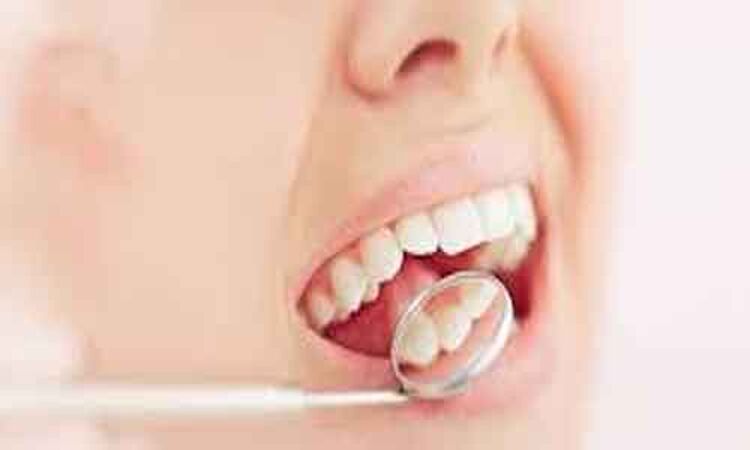- Home
- Medical news & Guidelines
- Anesthesiology
- Cardiology and CTVS
- Critical Care
- Dentistry
- Dermatology
- Diabetes and Endocrinology
- ENT
- Gastroenterology
- Medicine
- Nephrology
- Neurology
- Obstretics-Gynaecology
- Oncology
- Ophthalmology
- Orthopaedics
- Pediatrics-Neonatology
- Psychiatry
- Pulmonology
- Radiology
- Surgery
- Urology
- Laboratory Medicine
- Diet
- Nursing
- Paramedical
- Physiotherapy
- Health news
- Fact Check
- Bone Health Fact Check
- Brain Health Fact Check
- Cancer Related Fact Check
- Child Care Fact Check
- Dental and oral health fact check
- Diabetes and metabolic health fact check
- Diet and Nutrition Fact Check
- Eye and ENT Care Fact Check
- Fitness fact check
- Gut health fact check
- Heart health fact check
- Kidney health fact check
- Medical education fact check
- Men's health fact check
- Respiratory fact check
- Skin and hair care fact check
- Vaccine and Immunization fact check
- Women's health fact check
- AYUSH
- State News
- Andaman and Nicobar Islands
- Andhra Pradesh
- Arunachal Pradesh
- Assam
- Bihar
- Chandigarh
- Chattisgarh
- Dadra and Nagar Haveli
- Daman and Diu
- Delhi
- Goa
- Gujarat
- Haryana
- Himachal Pradesh
- Jammu & Kashmir
- Jharkhand
- Karnataka
- Kerala
- Ladakh
- Lakshadweep
- Madhya Pradesh
- Maharashtra
- Manipur
- Meghalaya
- Mizoram
- Nagaland
- Odisha
- Puducherry
- Punjab
- Rajasthan
- Sikkim
- Tamil Nadu
- Telangana
- Tripura
- Uttar Pradesh
- Uttrakhand
- West Bengal
- Medical Education
- Industry
injectable platelet rich fibrin may not prevent canine root resorption, Study says

Researchers have recently found out that injectable platelet rich fibrin (i-PRF) did not affect bone quality during canine retraction or prevent canine root resorption, as published in the BMC Oral Health Journal.
The role of injectable platelet rich fibrin (i-PRF) in orthodontic treatment has not been investigated with focus on its effect on dental and bony periodontal elements.
Therefore, Talar S. Zeitounlouian and colleagues from the Department of Orthodontics and Dentofacial Orthopedics, Faculty of Dental Medicine, Damascus University, Damascus, Syria conducted this study with the objective to evaluate the efficacy of i-PRF in bone preservation and prevention of root resorption.
The authors carried out a randomized split-mouth controlled trial including a total of 21 patients aged 16–28 years (20.85 ± 3.85), who were treated for Class II malocclusion with the extraction of the maxillary first premolars. Right and left sides were randomly allocated to either experimental treated with i-PRF or control sides.
After the leveling and alignment phase, the canines were retracted with 150gm forces. The i-PRF was prepared from the blood of each patient following a precise protocol, then injected immediately before canine retraction on the buccal and palatal aspects of the extraction sites. Localized maxillary cone beam computed tomography scans were taken before and after canine retraction to measure alveolar bone height and thickness and canine root length (indicative of root resorption), and the presence of dehiscence and fenestration. Paired sample t-tests and Wilcoxon signed rank tests were used to compare the changes between groups.
The following results were seen-
a. No statistically significant differences in bone height, bone thickness were found between sides and between pre- and post-retraction period.
b. However, root length was reduced post retraction but did not differ between sides.
c. In both groups, postoperative dehiscence was observed buccally and palatally and fenestrations were recorded on only the buccal aspect.
Hence, the researchers concluded that "I-PRF did not affect bone quality during canine retraction or prevent canine root resorption. I-PRF did not reduce the prevalence of dehiscence and fenestration."
Dr. Nandita Mohan is a practicing pediatric dentist with more than 5 years of clinical work experience. Along with this, she is equally interested in keeping herself up to date about the latest developments in the field of medicine and dentistry which is the driving force for her to be in association with Medical Dialogues. She also has her name attached with many publications; both national and international. She has pursued her BDS from Rajiv Gandhi University of Health Sciences, Bangalore and later went to enter her dream specialty (MDS) in the Department of Pedodontics and Preventive Dentistry from Pt. B.D. Sharma University of Health Sciences. Through all the years of experience, her core interest in learning something new has never stopped. She can be contacted at editorial@medicaldialogues.in. Contact no. 011-43720751
Dr Kamal Kant Kohli-MBBS, DTCD- a chest specialist with more than 30 years of practice and a flair for writing clinical articles, Dr Kamal Kant Kohli joined Medical Dialogues as a Chief Editor of Medical News. Besides writing articles, as an editor, he proofreads and verifies all the medical content published on Medical Dialogues including those coming from journals, studies,medical conferences,guidelines etc. Email: drkohli@medicaldialogues.in. Contact no. 011-43720751


